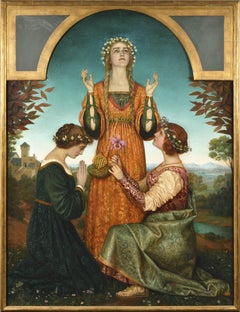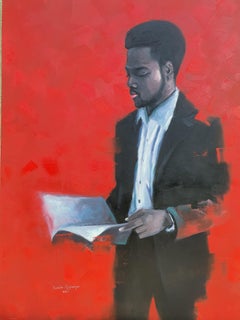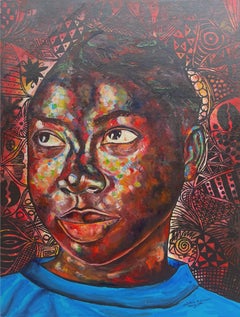Oversized Figurative Paintings
Late 19th Century Symbolist Figurative Paintings
Oil
Artist Comments
Set against a tranquil sandy backdrop, two women share an intimate moment of connection and serenity. The soft blended brushstrokes convey a timeless elegance...
21st Century and Contemporary Contemporary Figurative Paintings
Acrylic
21st Century and Contemporary Contemporary Figurative Paintings
Oil, Canvas
21st Century and Contemporary Romantic Portrait Paintings
Canvas, Oil
1770s Old Masters Figurative Paintings
Oil
21st Century and Contemporary Contemporary Figurative Paintings
Canvas, Acrylic
1980s Neo-Expressionist Figurative Paintings
Canvas, Oil
Early 2000s Contemporary Figurative Paintings
Canvas, Oil
Late 20th Century Victorian Landscape Paintings
Oil
2010s Street Art Portrait Paintings
Metal
Late 19th Century Folk Art Figurative Paintings
Oil
Late 20th Century Naturalistic Landscape Paintings
Canvas, Oil
18th Century Old Masters Figurative Paintings
Canvas, Oil Crayon
21st Century and Contemporary Contemporary Figurative Paintings
Canvas, Charcoal
21st Century and Contemporary Abstract Abstract Paintings
Canvas, Oil
21st Century and Contemporary Realist Figurative Paintings
Canvas, Oil
21st Century and Contemporary Contemporary Figurative Paintings
Canvas, Oil, Acrylic
21st Century and Contemporary Contemporary Figurative Paintings
Canvas, Oil
2010s Surrealist Figurative Paintings
Oil
2010s Impressionist Landscape Paintings
Canvas, Oil
21st Century and Contemporary Contemporary Figurative Paintings
Canvas, Oil, Acrylic
1680s Figurative Paintings
Canvas, Oil
2010s Contemporary Figurative Paintings
Canvas, Oil
2010s Abstract Figurative Paintings
Canvas, Spray Paint, Acrylic
2010s Surrealist Animal Paintings
Canvas, Oil
21st Century and Contemporary Abstract Expressionist Figurative Paintings
Canvas, Oil
2010s Abstract Figurative Paintings
Acrylic
2010s Contemporary Figurative Paintings
Canvas, Acrylic
2010s Contemporary Figurative Paintings
Oil, Wood Panel
1840s French School Portrait Paintings
Canvas, Oil
2010s Contemporary Landscape Paintings
Canvas, Egg Tempera
17th Century Baroque Figurative Paintings
Canvas, Oil
21st Century and Contemporary Contemporary Figurative Paintings
Canvas, Oil, Acrylic
2010s Realist Figurative Paintings
Cotton Canvas, Acrylic
21st Century and Contemporary Surrealist Figurative Paintings
Oil, Linen
1990s Modern Figurative Paintings
Canvas, Oil
2010s Impressionist Figurative Paintings
Canvas, Oil
Late 17th Century Baroque Figurative Paintings
Oil
2010s Contemporary Still-life Paintings
Oil, Wood Panel
1920s Nude Paintings
Canvas, Oil
Late 20th Century Impressionist Landscape Paintings
Oil, Canvas
1750s Baroque Figurative Paintings
Canvas, Oil
18th Century Baroque Landscape Paintings
Oil, Canvas
2010s Contemporary Figurative Paintings
Canvas, Oil
1980s Abstract Expressionist Abstract Paintings
Ink, Acrylic
1920s American Impressionist Figurative Paintings
Canvas, Oil
19th Century Victorian Figurative Paintings
Canvas, Oil
2010s Contemporary Landscape Paintings
Canvas, Oil
Early 2000s Contemporary Figurative Paintings
Canvas, Acrylic
1980s Expressionist Figurative Paintings
Canvas, Oil
1980s Abstract Expressionist Abstract Paintings
Ink, Acrylic
2010s Realist Landscape Paintings
Linen, Oil
Early 20th Century American Realist Portrait Paintings
Canvas, Oil
1980s Contemporary Nude Paintings
Canvas, Oil
2010s Contemporary Landscape Paintings
Canvas, Acrylic
2010s Contemporary Figurative Paintings
Canvas, Oil
2010s Contemporary Figurative Paintings
Canvas, Oil
19th Century Realist Landscape Paintings
Oil, Canvas
2010s Impressionist Interior Paintings
Canvas, Acrylic
Mid-19th Century Romantic Nude Paintings
Oil
Read More
See Kent Monkman’s Magical Realist Take on Frontier History
With a solo show at the Denver Art Museum and a commission from the Met, the Cree Canadian painter has become an international sensation.
Cecilia Vicuña Merges Politics, Science and Spirituality in Her Poetic Art
The Chilean creator, who has been living in exile in New York for decades, is having a major moment, receiving the biggest exhibitions, commissions and awards an artist could dream of.





